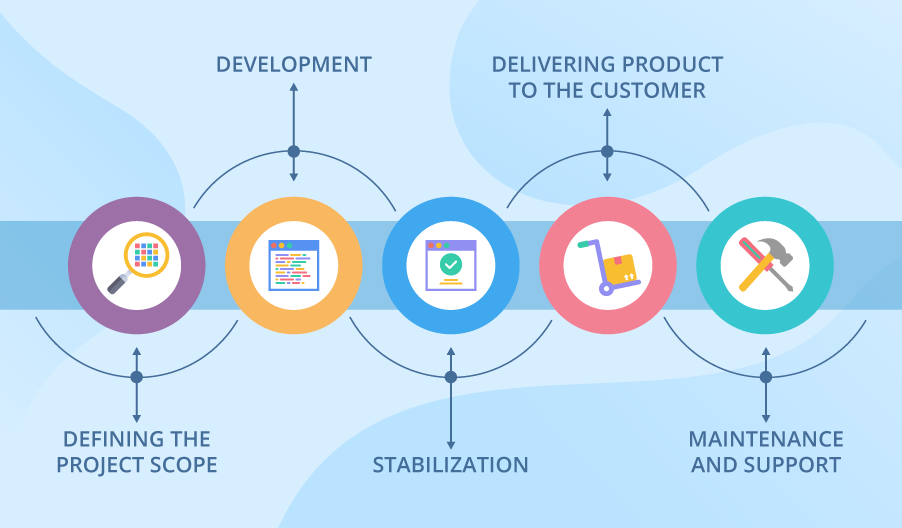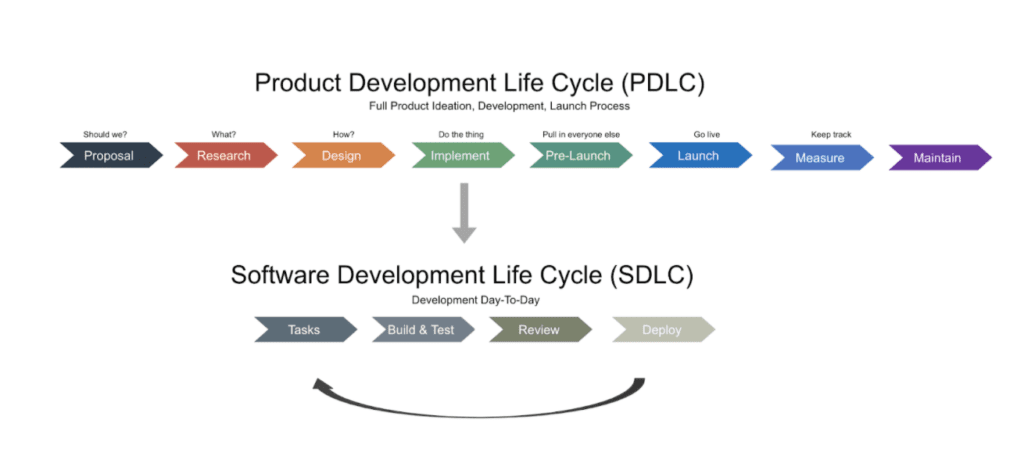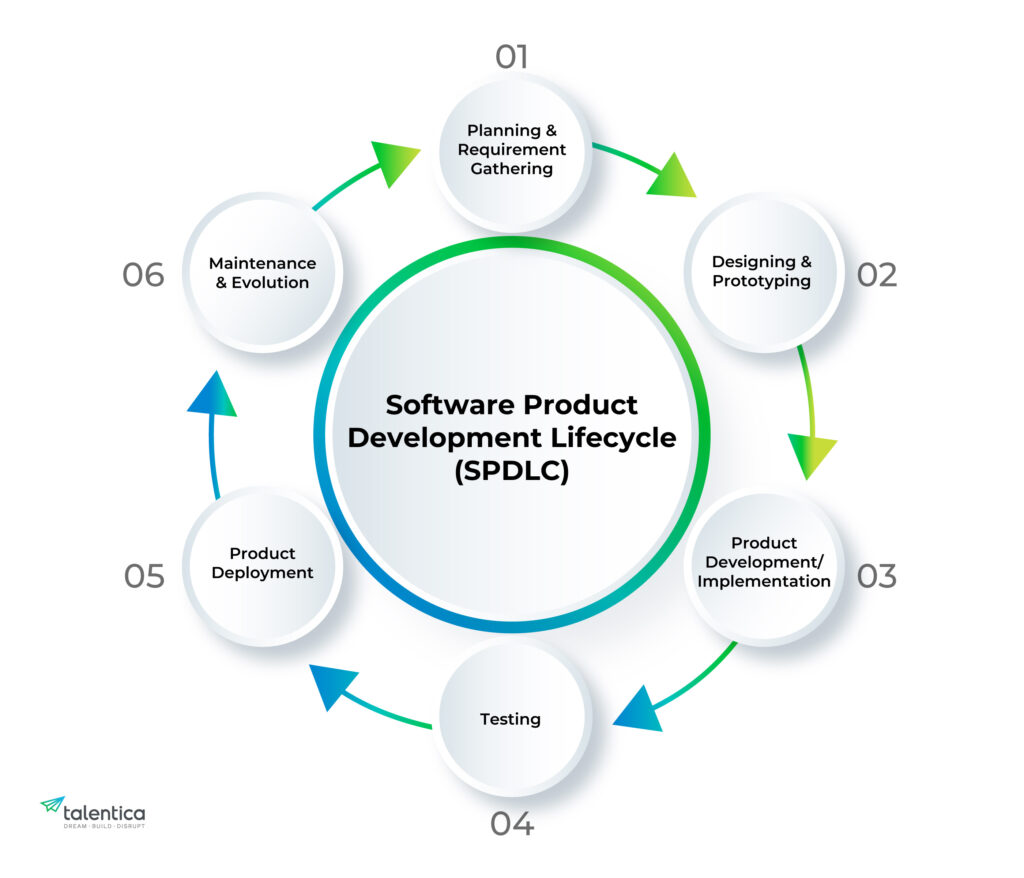Product Lifecycle
(2025-08-17T01:59.928Z)
Perplexity Query
(2025-08-17T01:59
.928Z)
Question:
Write a comprehensive one-page article about "Product Lifecycle in Software Development".
Response from sonar-pro:
The Product Lifecycle in Software Development is the comprehensive process that guides a software product from its initial idea through launch, ongoing use, updates, and ultimately retirement. It provides a framework for structured decision-making and resource allocation, ensuring software remains functional, relevant, and valuable throughout its lifespan. Understanding this lifecycle is critical for developers, businesses, and stakeholders striving for high-quality, cost-effective, and competitive products in today's fast-paced digital landscape. [^dld6d7]
[s0gifi]

The product lifecycle in software development typically unfolds through a series of well-defined stages:
- Ideation and Planning: The process begins by identifying a market need or opportunity. During this stage, teams engage in brainstorming and market research to define the product’s vision and feasibility. This early planning ensures clarity on scope, goals, and resource allocation. [^dld6d7] [nd1tl7]
- Design and Development: Once the groundwork is set, software architects and engineers create design specifications and begin coding. This phase emphasizes both functionality and user experience, often requiring close collaboration between designers, developers, and stakeholders to ensure alignment with business objectives. [nd1tl7] [s0gifi]
- Testing and Deployment: Before release, software undergoes thorough testing to detect and resolve bugs, verify functionality, and ensure performance meets predefined standards. Following successful testing, the product is deployed for user access, whether as an internal tool, public application, or B2B solution. [^dld6d7] [nd1tl7]
A practical example is seen in mobile app development: a team might identify a gap in fitness tracking solutions, plan a new app’s features, design intuitive user interfaces, develop core functionalities, conduct beta testing with real users, release the app to app stores, periodically update the app based on user feedback, and, after years of use and technological shifts, retire the app in favor of a more modern version. This cycle is mirrored in large-scale enterprise platforms and specialized industrial tools alike.
Structured product lifecycles bring clear benefits:
- Improved cross-functional collaboration among teams.
- Enhanced compliance and security management (vital for healthcare and finance).
- Adaptability and shorter time-to-market, especially with modern practices like DevOps and continuous delivery. [xq2lpu]
However, challenges can arise, including scope creep, shifting requirements, team misalignment, and the technical debt that accumulates as software evolves. Navigating these issues demands disciplined project management, rigorous testing, and responsive support structures.

Current State and Trends
Most organizations today use variations of the traditional software development lifecycle (SDLC) models, such as Waterfall or Agile. [^dld6d7]
[nd1tl7]
Agile methodologies and DevOps practices have gained prominence, emphasizing iterative development, continuous integration, frequent deployment, and automated testing. This enables teams to respond rapidly to market changes, user feedback, and security threats.
[xq2lpu]
Major technology companies and cloud providers like Microsoft, Amazon, and IBM have developed robust toolchains and ecosystems to support these approaches, making global collaboration and large-scale deployments feasible.
The adoption of cloud-native technologies, microservices architecture, and artificial intelligence-driven automation are recent developments shaping lifecycle management. These advances enable more granular updates, better scalability, and predictive maintenance, which align the product lifecycle more closely with evolving business and user needs.

Future Outlook
Looking forward, the product lifecycle in software development is expected to become even more integrated, automated, and user-focused. Advancements in AI, machine learning, and real-time analytics will drive predictive maintenance, automated code generation, and more adaptive products that evolve dynamically. These trends could reduce downtime, accelerate innovation, and improve software longevity, fundamentally reshaping how both teams and users engage with technology products. [^dld6d7]
Understanding and managing the product lifecycle in software development is essential for organizations striving to deliver innovative, secure, and enduring products. As technology and methodologies evolve, the lifecycle itself will adapt, presenting new opportunities for efficiency and impact in the digital world.
Citations
[23w3q5] 2025, May 08. "Software Development Lifecycle.)". Devrev.Published: 2025-05-28 | Updated: 2025-06-03
[xq2lpu] 2025, Mar 27. Software Product Life Cycle: Stages, Challenges, Best Practices. Published: 2023-09-15 | Updated: 2025-03-27
[nd1tl7] 2025, Jun 16. What is SDLC? Software Development Life Cycle Explained. Published: 2024-12-11 | Updated: 2025-06-16
[s0gifi] 2025, Aug 11. What is the Software Development Lifecycle (SDLC)? - IBM. Published: 2025-07-25 | Updated: 2025-08-11
[386cwb] 2025, Aug 15. What is the Software Development Lifecycle? - ProductPlan. Updated: 2025-08-15